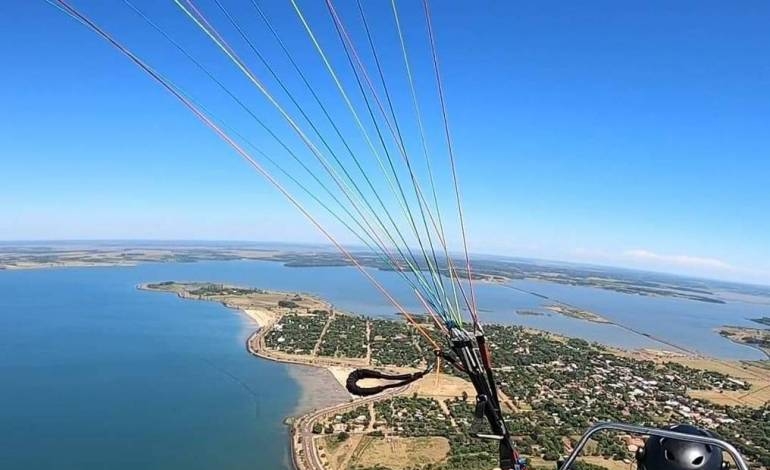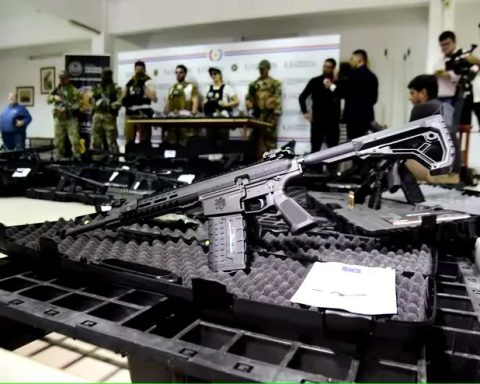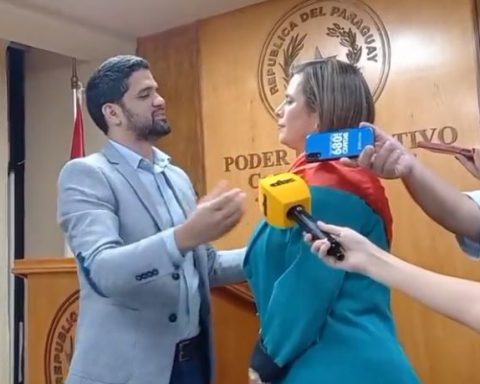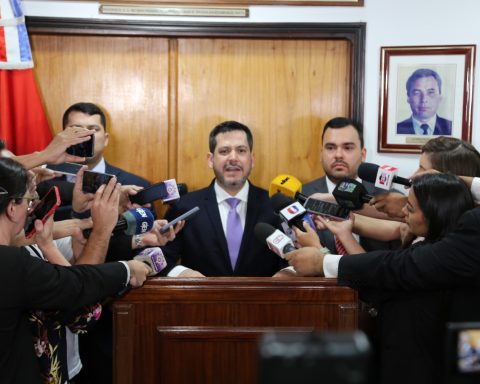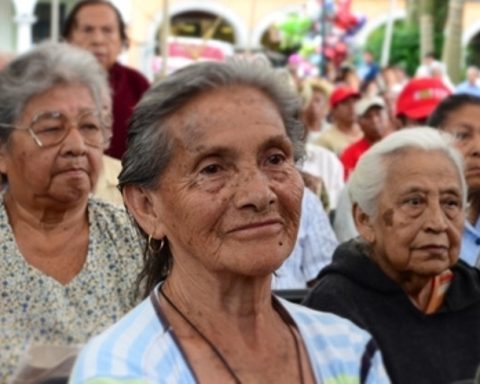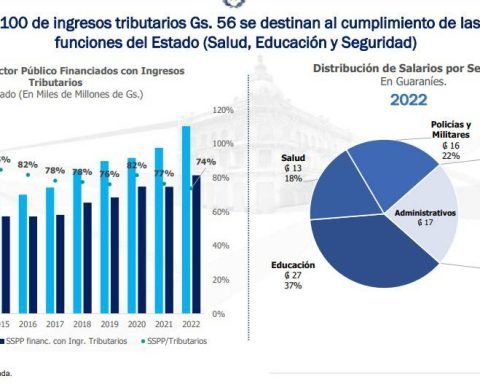By Rocío Gómez, Itapúa – The Nation
Although in Paraguay we do not have a sea, in a small district of Itapúa, 6,000 inhabitants think differently. With beaches of fine sand, deep waters and numerous kapi’i roofs, Carmen del Paraná stands out as the closest thing to the ocean that our Republic has. The three municipal beaches Pirayú, Ibicuy and Tacuary make foreign and national tourists fall in love.
“I believe that paradise is here, we have what many want to have in their city. I always say, you don’t have to go to another country to enjoy a sea, the sea of Carmen del Paraná”, María Fressler, owner of the Villa Rosita inn a few blocks from Carmen beach.
We visited the different types of accommodation offered by the city and discovered that there are a total of 12 inns, 5 hotels, 14 lodges and 1 municipal camping area. Being located along route PY01, none are far from the beaches.
In addition to its incredible beaches, it has numerous sports and tourist activities. One of them is the Stella Maris Tour, a 115-hp motorized highboard slider that sets sail and navigates the Paraná River in the area.
BOAT TOUR TO A LITTLE KNOWN ISLAND
This family business arose from the experience of former sailor Isidro Chamorro, a 70-year-old retiree, who worked for many years supervising the works on the Paraná River. Now, with his daughter Deysi, they present this new recreation option. While she takes care of all the logistics and contacts, “the captain” Isidro navigates and travels the waters to the delight of tourists.
There are two tour options. One is the tour of the three beaches and surroundings, which lasts approximately 40 minutes in total and costs G. 80,000. The other tour reaches the island “the remnant Yacyretá”, a part of the former dam, and the Dunes of San Cosme and Damián. This island is little known and the trip is 40 minutes one way, for a cost of G. 150,000. The costs are a bit high for the boat they use.

The vessel is named the Stella Maris Tour after a significant family history. Deysi’s parents were born and raised on Ybycuí Island, as were hers, ten of hers (yes, you read that right), ten of her siblings. She was the only one born in Carmen. In addition, Stella Maris is the patron saint of navigators and in honor of her they chose this name, which is also related to the fact that almost all Chamorro were born on an island. Her father dedicated many years to fishing as a means of work.
“It is something new, very interesting for visitors. I think it will be an attraction that will improve the city. I am 26 years old, I am an environmental engineer, and since I still do not work in what I studied, I support my father as his manager. I feel comfortable because he always dreamed of having a boat and I can accompany him in doing something he loves”, Deysi confesses, very moved.

UNFORGETTABLE PARAGLIDING BAPTISM FLIGHT
Paragliding is revolutionizing tourism in the South. It arose from a desire to provide people with images of the Carmeña city from the baptism flight, as they refer to the first time people fly paragliding.
“The mayor Germancito is a very young person. We met in the world of rallying and when I suggested flying over Carmen, he was very interested. Through it, this city is increasingly open to innovative initiatives”, comments José Jiménez, paragliding pilot for the consortium of companies Paraguay Fly, which also flies paragliders in Itauguá and Patiño.

Paragliding is a very safe modality, it is flown at low altitude. It takes off and lands in the same area. It lasts 10 to 12 minutes, “enough to tour the Carmen del Paraná peninsula.” The pilot Jiménez considers it the Paraguayan Caribbean because of the warm waters and the landscape, for which it is worth the investment of G. 350,000 per person. It includes the video in GoPro and they make a price for groups of people or for couples. They have two teams, used according to demand and weather conditions.
“After the barrier of fear there is really security. When you pass that barrier you begin to see things differently. People say that it is a unique experience, much better than flying by plane. You can open your hands and embrace the world. After skydiving, this is the best there is,” says Jiménez.
To contact and book flights they present the (0992) 522-293 and through the Instagram profile @paraguay.fly where the spectacular images of the baptism flights can be found.
Carmen awaits you with an innovative tourism, with a familiar touch and with its Paraguayan sea. To access tourist information, present the telephone number (0995) 609-726, with the Secretary of Tourism of the Municipality.

AN ECONOMIC BREAKTHROUGH FOR ITAPÚA
Previously unknown, Carmen del Paraná has already moved more than US$ 3,000,000 in the area, through domestic tourism. Generating a much-needed respite in the department of Itapúa, hard hit economically by the pandemic due to its almost direct dependence on tourism and trade with Argentina.
In January, a daily occupation of 2,000 beds was evaluated between the districts of Coronel Bogado and Carmen. The approximate cost is G. 100,000 per person, reaching the figure of G. 6 billion just for lodging. If we consider the necessary expenses for fuel and food, estimating a minimum expense of G. 100 thousand per day, G. 5 billion more can be added.
“If one considers that on New Year’s Eve the 20,000 visitors only spent G. 25,000 per day between January 1 and 2, we are talking about 1,000,000,000 guaraníes, distributed in service stations, commercial premises, even private homes that sell ice”, indicates Darío Giménez, institutional communication consultant.
If we add the commercial activities of rental of umbrellas, folding chairs, boat/kayak rides and paragliding, as well as other entertainment activities, the figure of more than 3 million dollars is reached, approximately G. 20 billion of monetary investment in the carmeño sea and surrounding districts.
The lung of the South is being tourism and as part of this economic reactivation, Coronel Bogado’s greatest attraction also plays a central role: the chipa.

“THE EASIEST THING IN BOGADO IS TO SELL CHIPA”
Visiting one of the most iconic chiperías in the renowned Coronel Bogado district, we were surprised to discover that 50,000 chipas are sold every day in its 149 square km.
Bogado, stationed just before the entrance to Carmen del Paraná, became a strategic and folkloric site for its sale of chipas on route PY01, where several entrepreneurs are encouraged to open new chiperías, despite being a road less traveled than route PY02.
“Here the easiest thing to do is sell chipa. That’s why, when you go around the country, they say ‘Coronel Bogado chipa and Barrero chipa’. They are characteristic places to be able to sell chipa in any part of the country and even abroad”, he says smiling with his black apron, Claudio “Don Pipo” Galeano. Before the pandemic, many of his clients bought Don Pipo chipas to sell in Posadas and other cities in the Argentine province of Misiones.
Don Pipo tells us that he started with the sale of chipas in 1991, inspired by his family roots that were dedicated to the sale of the traditional product. He firmly believes that every Paraguayan has relatives who are chiperos. At your local, they don’t have a secret recipe. “The same as María Ana, who are very good friends of ours, we always say that the only recipe that works is to make it with a lot of patience and using good quality products.” Now they use more vegetable fat, they are more demanding when buying cheese and they seek to use good condiments to differentiate themselves from others.
The high season is considered to be in summer due to the influx of tourists. The chiperos decided to reinvent themselves a long time ago, offering chipas with filling, beyond the chipa so’o. Instead of people buying empanadas, they can choose to buy stuffed chipas, with ham and cheese, with 4 cheeses and with chicken.
“We are part of the three best chiperías in the country,” celebrates Don Pipo, referring to the competition held two years ago by the Senatur, the Ministry of Industry and Commerce, the firm Codipsa and the Garofalo Center. The Don Pipo chip shop came in third place, while the first place was occupied by a chip shop of descendants of Bogadenses and the second place, one that has a store in Paraguarí.
The inevitable date, on the way to the vacations in the Paraguayan sea of Carmen, is without a doubt with the chiperías of Cnel. Bogado.

THE RICE CAPITAL
Carmen is also known as the Capital of Rice, due to the three large national rice industries that have their mills there: El País, Arrosur SRL and Agrozafra SA. The district has been producing rice since 1930 and during the Chaco War it stood out for being a very important supplier of rice.
Taking advantage of the low-lying areas near the Paraná River, the Carmeños produced a large quantity of rice. Everything was going from strength to strength until the Yacyretá dam reservoir was built and the rice fields were flooded, which is why they were forced to move the sown fields to other areas. Most migrated near the Tebicuary River and another sector reached areas near the Paraguay River.
Paraguayan rice is exported from Carmen to more than 40 countries. “The mills in Carmen del Paraná have a lot of technology and the processed and industrialized rice here is widely accepted worldwide in markets such as Germany, Belgium, Italy, Spain, the United States, and Mexico,” says municipal councilor Guillermo Zub, director of the industry Agrozafra SA.
More than 800 people who depend on this item work in the entire rice chain in the district. Added to that is the workforce that includes the harvest, with more than 1,000 people involved in what the mill entails, work in the fields, freight and more.
Many Carmen rice farmers go to other parts of the country to work, because of the experience they have in rice fields and in their industrialization.

LOOKING FOR INVESTORS
“We are giving it a dynamic and positioning Carmen as one of the best places for people to want to come and meet. With the drive to present our city on all platforms, we seek to attract investors, and we are already beginning to see results; companies are arriving and asking to invest here”, says Mayor Germán Gneiting, inviting people to discover and fall in love with this hidden district of the Itapúa department.
